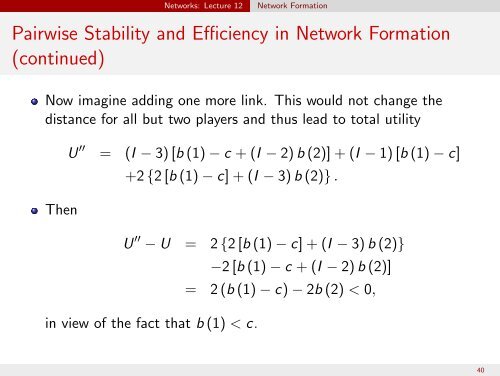14.15J/6.207J Networks: Applications of Game Theory to Networks
14.15J/6.207J Networks: Applications of Game Theory to Networks
14.15J/6.207J Networks: Applications of Game Theory to Networks
You also want an ePaper? Increase the reach of your titles
YUMPU automatically turns print PDFs into web optimized ePapers that Google loves.
<strong>Networks</strong>: Lecture 12Network FormationPairwise Stability and Efficiency in Network Formation(continued)Now imagine adding one more link. This would not change thedistance for all but two players and thus lead <strong>to</strong> <strong>to</strong>tal utilityThenU = (I − 3) [b (1) − c + (I − 2) b (2)] + (I − 1) [b (1) − c]+2 {2 [b (1) − c] + (I − 3) b (2)} .U − U = 2 {2 [b (1) − c] + (I − 3) b (2)}in view <strong>of</strong> the fact that b (1) < c.−2 [b (1) − c + (I − 2) b (2)]= 2 (b (1) − c) − 2b (2) < 0,40
















